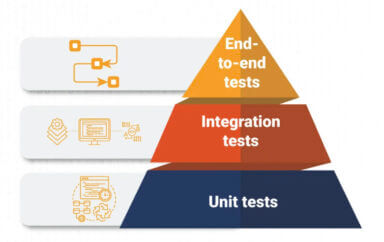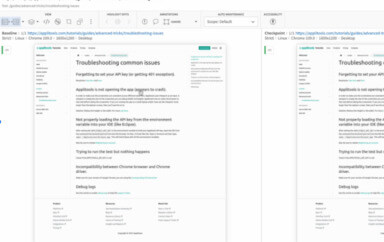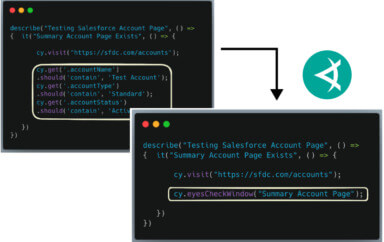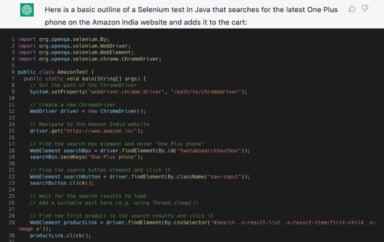If you think like the smartest people in software, you conclude that testing time detracts from software productivity. Investments in parallel test platforms pay off by shortening the time to validate builds and releases. But, you wonder about the limits of parallel testing. If you invest in infrastructure for fast testing across multiple browsers, do you capture failures that justify such an investment?
The Old Problem: Browser Behavior
Back in the day, browsers used different code bases. In the 2000s and early 2010s, most application developers struggled to ensure cross browser behavior. There were known behavior differences among Chrome, Firefox, Safari, and Internet Explorer.
Annoyingly, each major version of Internet Explorer had its own idiosyncrasies. When do you abandon users who still run IE 6 beyond its end of support date? How do you handle the IE 6 thorough IE 10 behavioral differences?
While Internet Explorer differences could be tied to major versions of operating systems, Firefox and Chrome released updates multiple times per year. Behaviors could change slightly between releases. How do you maintain your product behavior with browsers in the hands of your customers that you might not have developed with or tested against?
Cross browser testing proved itself a necessary evil to catch potential behavior differences. In the beginning, app developers needed to build their own cross browser infrastructure. Eventually, companies arose to provide cross browser (and then cross device) testing as a service.
The Current Problem: Speed Vs Coverage
In the 2020s, speed can provide a core differentiator for app providers. An app that delivers features more quickly can dominate a market. Quality issues can derail that app, so coverage matters. But, how do app developers ensure that they get a quality product without sacrificing speed of releases?
In this environment, some companies invest in cross browser test infrastructure or test services. They invest in the large parallel infrastructure needed in creating and maintaining cross browser tests. And, the bulk of uncovered errors end up being rendering and visual differences. So, these tests require some kind of visual validation. But, do you really need to repeatedly run each test?
Applitools concluded that repeating tests required costly infrastructure as well as costly test maintenance. App developers intend that one server response work for all browsers. With its Ultrafast Grid, Applitools can capture the DOM state on one browser and then repeat it across the Applitools Ultrafast Test Cloud. Testers can choose among browsers, devices, viewport sizes and multiple operating systems. How much faster can this be?
Hackathon Goal – Fast Testing With Multiple Browsers
In the Applitools Ultrafast Cross Browser Hackathon, participants used the traditional legacy method of running tests across multiple browsers to compare behavior results. Participants then compared their results with the more modern approach using the Applitools Ultrafast Grid. Read here about one participant’s experiences.
The time that matters is the time that lets a developer know the details about a discovered error after a test run. For the legacy approach, coders wrote tests for each platform of interest, including validating and debugging the function of each app test on each platform. Once the legacy test had been coded, the tests were run, analyzed, and reports were generated.
For the Ultrafast approach, coders wrote their tests using Applitools to validate the application behavior. These tests used fewer lines of code and fewer locators. Then, the coders called the Applitools Ultrafast Grid and specified the browsers, viewports, and operating systems of interest to match the legacy test infrastructure.
Hackathon Results – Faster Tests Across Multiple Browsers
The report included this graphic showing the total test cycle time for the average Hackathon submission of legacy versus Ultrafast:
Here is a breakdown of the average participant time used for legacy versus Ultrafast across the Hackathon:
| Activity | Legacy | Ultrafast |
|---|---|---|
| Actual Run Time | 9 minutes | 2 minutes |
| Analysis Time | 270 minutes | 10 minutes |
| Report Time | 245 minutes | 15 minutes |
| Test Coding Time | 1062 minutes | 59 minutes |
| Code Maintenance Time | 120 minutes | 5 minutes |
The first three activities, test run, analysis, and report, make up the time between initiating a test and taking action. Across the three scenarios in the hackathon, the average legacy test required a total of 524 minutes. The average for Ultrafast was 27 minutes. For each scenario, then, the average was 175 minutes – almost three hours – for the legacy result, versus 9 minutes for the Ultrafast approach.
On top of the operations time for testing, the report showed the time taken to write and maintain the test code for the legacy and Ultrafast approaches. Legacy test coding took over 1060 minutes (17 hours, 40 minutes), while Ultrafast only required an hour. And, code maintenance for legacy took 2 hours, while Ultrafast only required 5 minutes.
Why Fast Testing Across Multiple Browsers Matters
As the Hackathon results showed, Ultrafast testing runs more quickly and gives results more quickly.
Legacy cross-browser testing imposes a long time from test start to action. Their long run and analysis times do not make them suitable for any kind of software build validation. Most of these legacy tests get run in final end-to-end acceptance, with the hope that no visual differences get uncovered.
Ultrafast approaches enable app developers to build fast testing across multiple browsers into software build. Ultrafast analysis catches unexpected build differences quickly so they can be resolved during the build cycle.
By running tests across multiple browsers during build, Ultrafast Grid users shorten their find-to-resolve cycle to branch validation even prior to code merge. They catch the rendering differences and resolve them as part of the feature development process instead of the final QA process.
Ultrafast testers seamlessly resolve unexpected browser behavior as they check in their code. This happens because, in less than 10 minutes on average, they know what differences exist. They could not do this if they had to wait the nearly three hours needed in the legacy approach. Who wants to wait half a day to see if their build worked?
Combine the other speed differences in coding and maintenace, and it becomes clear why Ultrafast testing across multiple browsers makes it possible for developers to run Ultrafast Grid in development.
What’s Next
Next, we will cover code stability – the reason why Ultrafast tests take, on average, 5 minutes to maintain, instead of two hours.







